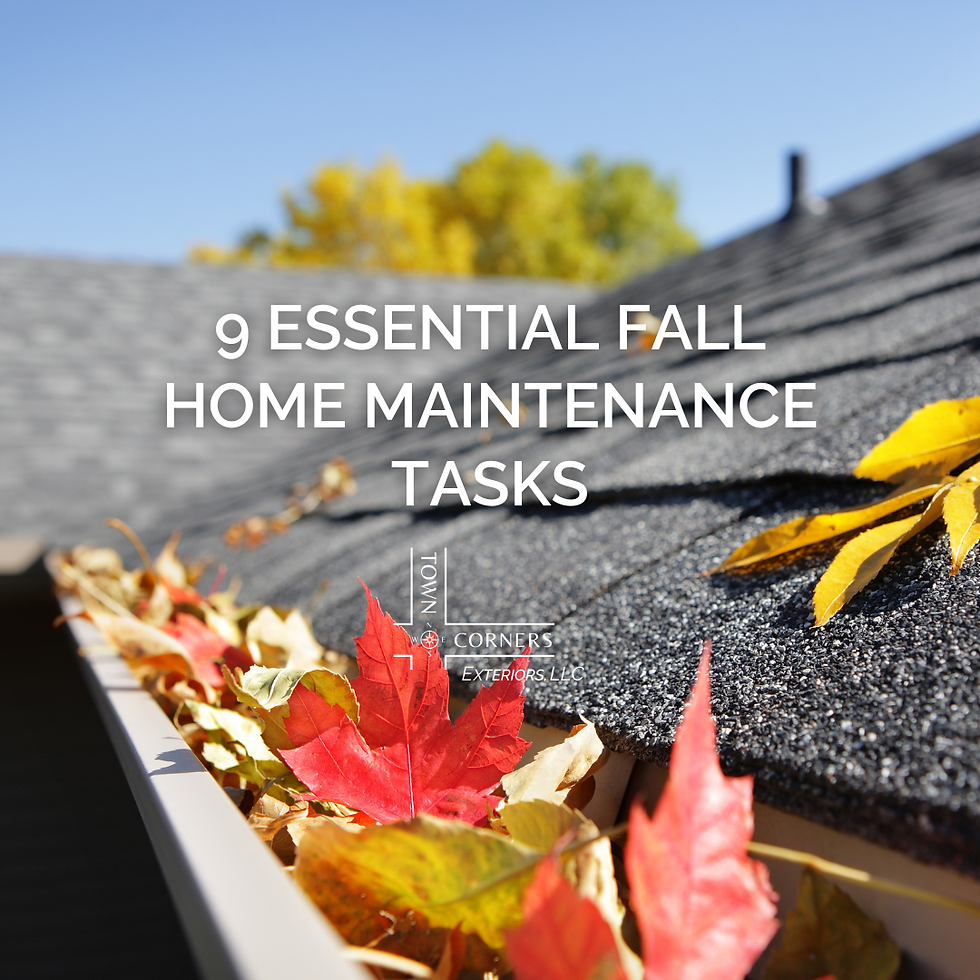Boost Your Home's Energy Efficiency: The Savings of an Exterior Renovation
- Rebecca Garza
- Jun 23
- 3 min read

Upgrading your home's exterior can lead to significant energy savings and a more comfortable living environment. Research shows that replacing old roofs, siding, windows, and doors with energy-efficient alternatives can substantially reduce your energy bills and carbon footprint.
Roof Replacement: A Foundation for Savings
A new roof offers more than just aesthetic appeal; it can be a powerhouse for energy efficiency. Modern roofing solutions incorporate features like Energy Star technology, with shingles designed to reflect sunlight and cool roof coatings that reduce heat absorption, keeping your home cooler. Improved insulation from contemporary materials and techniques minimizes heat escape in winter and heat entry in summer. Proper ventilation enhancements prevent heat buildup and reduce the risk of ice dams, which in turn impact energy usage. Furthermore, solar roofing can significantly lower energy bills and increase energy independence.
In Climate Zone 5 (e.g., Chicago), installing an energy code-compliant roof replacement (R-30) is estimated to yield 6-9% annual whole-building energy savings, translating to $2.97 to $4.58 in energy cost savings per square foot and a reduction of approximately 43 to 75 pounds of carbon equivalent emissions per square foot. Even preventing leaks can lead to energy savings, as conditioned air won't escape.
Siding Replacement: A Protective and Efficient Layer
Replacing your home's siding offers a prime opportunity to enhance energy efficiency. Materials like fiber cement are durable, beautiful, and energy efficient. Vinyl siding is cost-effective, long-lasting, recyclable, and low maintenance, and insulated vinyl siding can reduce energy consumption by up to 20%. Wood siding provides excellent thermal resistance, preventing air from escaping. While metal siding itself may not be a strong insulator, it can be combined with foam insulation for improved efficiency.
Crucially, installing or replacing siding is the perfect opportunity to upgrade your house wrap, which prevents moisture penetration and minimizes air leaks —both vital for an energy-efficient home. Checking side vents in vinyl siding is also essential, as they help circulate air, reduce pressure on your HVAC system, and maintain indoor temperatures. Siding with higher R-values can reduce energy costs by up to 20%, depending on the insulation and local weather conditions. For cold climates, insulated vinyl and fiber cement siding are excellent choices. Michigan's recent legislation, which requires utilities to increase their energy efficiency standards, highlights a broader commitment to reducing energy waste. Overall, homeowners can save 15% on heating and cooling and 11% on total energy costs by air sealing and properly insulating walls, attics, basements, and floors.
Windows and Doors: Sealing in Comfort and Savings
Windows and doors are critical points for energy loss. Replacing old, inefficient units can lead to substantial savings. Double-pane windows already offer some benefits but upgrading to triple-pane windows with high solar gain and low-E glass, as demonstrated in a Boston study, can reduce annual heating costs by 24%. Low-emissivity (low-E) coatings on insulated windows can reduce energy loss by 30% to 50%.
Energy-efficient windows can save households an average of 13% on energy bills. Sealing drafts around doors can result in annual savings of 5–30%. Homeowners in the North-Central Zone replacing single-pane windows save an average of $493 (11%) annually on heating and cooling, while those in the Northern Zone see average savings of $568 (12%). Energy-efficient doors are designed to minimize energy loss by preventing air leakage and maintaining a consistent indoor temperature. Employing weatherstripping made of rubber, silicone, vinyl, or metal creates a secure seal around door perimeters, preventing drafts and maintaining consistent indoor temperatures. Studies indicate that as much as 30% of a home's heat can be lost through doors and windows, underscoring the importance of these upgrades.
Investing in energy-efficient roof, siding, window, and door replacements not only contributes to a greener planet but also provides tangible financial benefits through reduced energy consumption and lower utility bills. Now, just imagine if you replaced your roof, siding, windows, and doors all at once! Not only would you save money on installation by bundling your exterior renovations, but the energy savings would also impact your wallet positively in a short amount of time, paying for itself.
Ready to transform your home’s exterior this summer? Request your complimentary consultation today and take the first step toward your renovation journey!




Comments